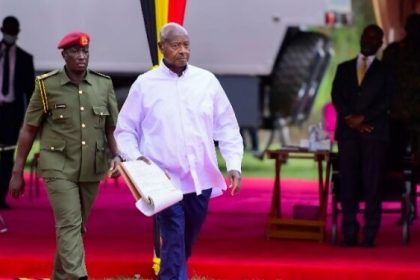Why currency manipulation might be a better tool for Kenya, than bans in trade war with Uganda

Michael Wakabi
At the time of writing this article, the Japanese Yen was trading at an average of 108 to the US dollar. Back in the nineties and well into the first decade of the new millennium, the exchange rate was a bitter issue between Japan and the United States. Japan was exporting more to the US not only on the strength of the quality of its products, but also because it was cheaper for US consumers to buy from Japan. So, every now and then, the US would pile pressure on Japan to revalue the Japanese yen because it was underpriced. In later years, China would face similar pressure from the US as the trade deficit between the two widened in China’s favour.
In recent weeks, Kenya-Uganda trade tensions flared up again when the former banned Ugandan maize imports, citing failure to meet phytosanitary standards. Coming against the backdrop of a ban on milk imports from Uganda a year earlier, citing similar concerns, the Kenyan government found itself facing fire both from within Kenya and Uganda. Kenyan consumers were aghast at the prospect of being exposed to higher prices for their staple food because of their government’s action. In Uganda both politicians and the business community were concerned about the likely economic and individual financial losses from Nairobi’s move.
The problems between Uganda and her EAC partners stem from three primary sources. Lesser developed than either Kenya or Tanzania, the country is virgin territory and is bound to attract more investors as the other markets reach saturation. That is largely true of agro-processing where opportunities for value-addition abound.
Uganda also has the cheapest currency in the region. For every one shilling, a Kenyan cross-border trader gets thirty Ugandan shillings. The trader from Rwanda gets four while one from Tanzania gets atleast one and half local units for each TZ shilling. Even without doing anything, without barriers, business people from neigbouring countries find sourcing from Uganda cheaper because of the exchange rate advantage. The third problem for neighbours is that with lots of arable land and good rains, Uganda’s agricultural production is largely organic and low-cost. Combined with a weak currency, goods from Uganda are difficult to beat on price.
In the context of the East African Common Market Protocol, Kenya has limited options for dealing with the perceived threat from its western neighbour. A quick fix would be to devalue the Kenyan currency to create price parity. But that would come with attendant inflation.
The more sober and long-term solution, would be to let the East African community be and allow it to work the way it is projected on paper. That way players like Brookside Dairies, and other Kenyan milk processors would set up processing plants in Uganda, Rwanda and South Sudan, employ Kenyans and supply cheap milk to Kenyan consumers. Alternatively, they could truck raw milk from collection centres in Uganda for final processing in Kenya. That would create a win-win for everybody and allow the region to prosper in tandem.
The on and off trade tiffs in East Africa speak to an old problem and the refusal by our political leaders to take a leap of faith and believe in the long-term benefits of regional economic integration. In the short years of the East African Common Services Organisation EACSO from 1961 to 1967, Kenya was East Africa’s manufacturing hub because of a longer tradition of industrial development. Plans for industrial development in the region were premised on comparative advantage.
Hence, Uganda with its cheap electric power, would be the base for heavy industry while Kenya and Tanzania would run light industry. That is how Madhvani’s 30 million tonnes a year East African Steel Corporation and the 9 million electric bulbs a year East African Lighting in Jinja came to be. In return Kenya, virtue of the oil refinery in Mombasa became the base for foam mattress manufacturing and other petrochemical industries.
Ideally, Uganda, with its low cost of production should have been East Africa’s food basket and home to the food processing industry. Factors like labour already enjoyed free movement and one was as likely to find a Ugandan station manager at Voi Railway Station as one was likely to find a Tanzanian at Namwendwa rail station in eastern Uganda.
That plan unraveled three years after Kenya got independence as the partner states grappled with stalling economic growth, booming populations and spiking unemployment. Rather than address the underlying challenge, the leaders of the time thought allocation of economic opportunities was impeding national interest. Within a short time, uneconomic industrial units mushroomed across the region. Their inherent economic inefficiency meant they could not survive against their more established competitors without protection. That was the genesis of protectionism in East Africa and by falling back to old tools, Kenya is in effect setting up the East African Community for another split.

 Why we beg to differ with President Museveni on permanent terms pronouncement
Why we beg to differ with President Museveni on permanent terms pronouncement
 Uganda’s Aviation Infrastructure: Time for ambitious upgrades and structural reform
Uganda’s Aviation Infrastructure: Time for ambitious upgrades and structural reform
 Why and how economics must change
Why and how economics must change
 Illicit alcohol, the unbridled silent killer in Uganda
Illicit alcohol, the unbridled silent killer in Uganda
 Sobi’s gang is fragmenting, here is why that is bad for you
Sobi’s gang is fragmenting, here is why that is bad for you
 Africans must resist being bulldozed in energy transition timetable debate
Africans must resist being bulldozed in energy transition timetable debate
